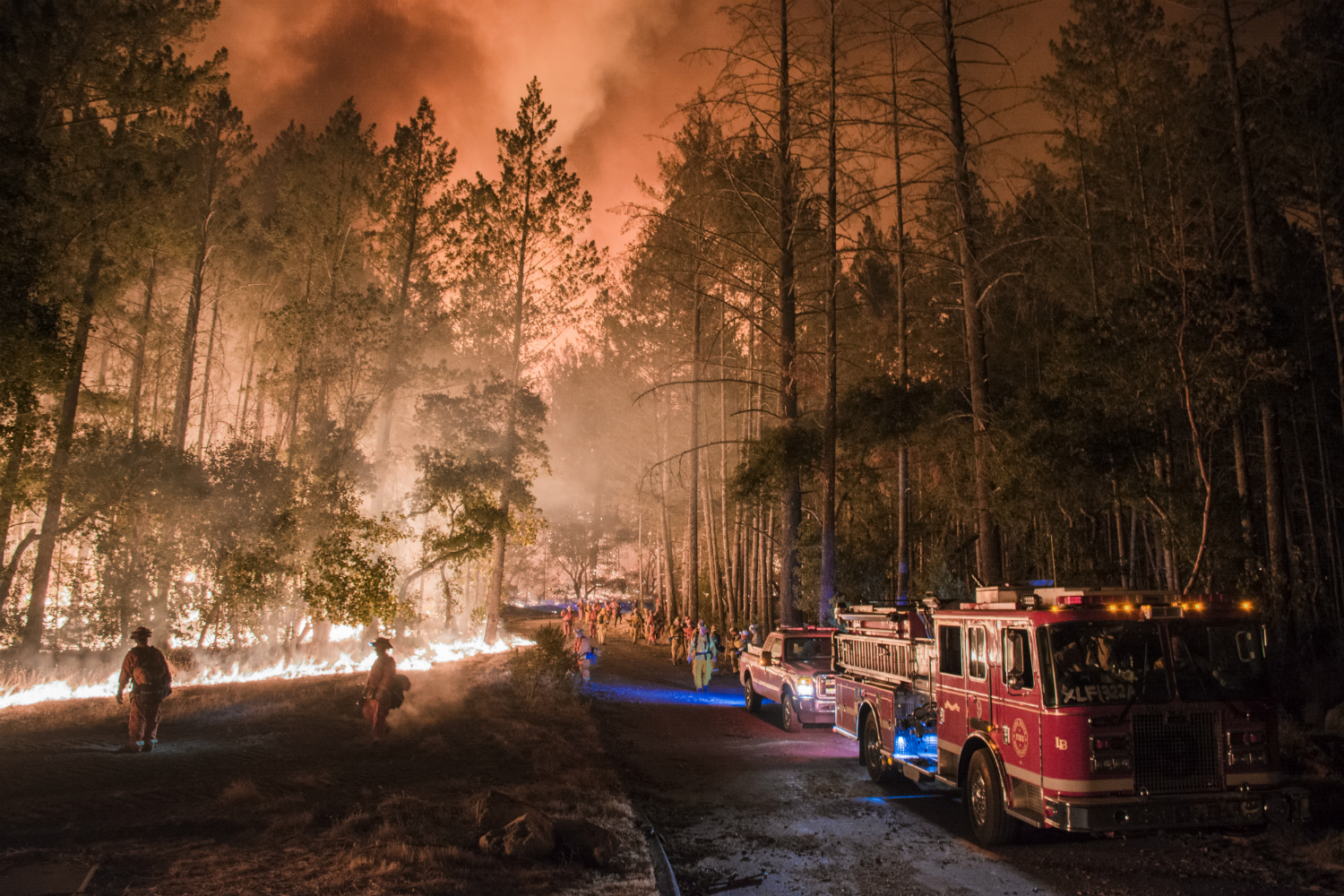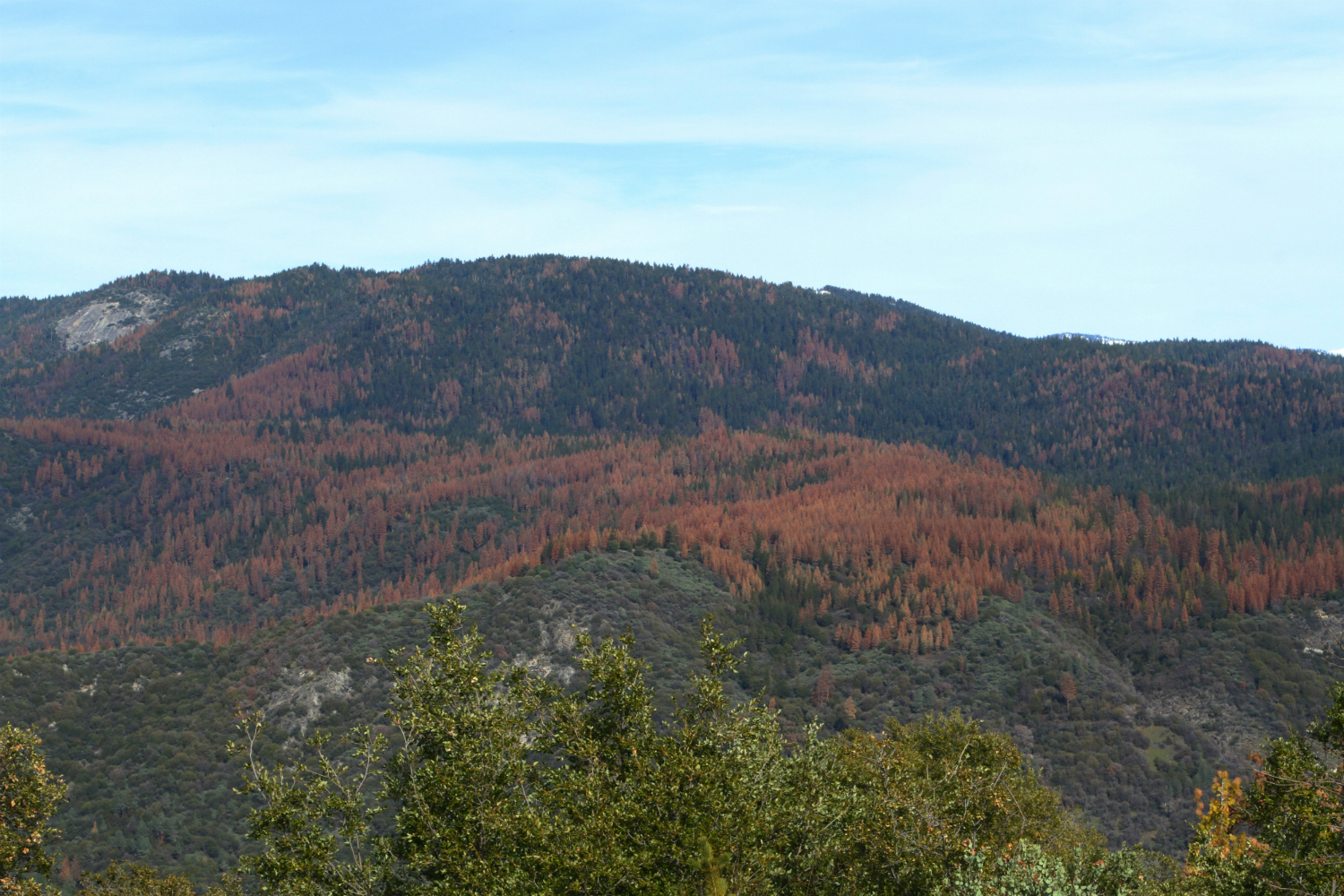Climate change is intensifying weather events, including drought and heat waves, which accelerate wildfires. California is experiencing lower humidity and higher temperatures for longer periods of time during the year. The average fire season has increased by 78 days over the last four decades and in many areas of the State, fire season is occurring year round. Wildfires are becoming more destructive and deadly, with over 10,000 structures destroyed and 46 lives tragically lost in the October and December 2017 fire sieges alone.

Adding to the risk, California’s forests are overgrown due to decades of aggressive fire suppression to protect resources and property, as well as land management policies that have not supported active forest management. These overcrowded forests, now critically dry from drought, increasing temperatures and changing precipitation patterns, are experiencing devastating wildfires and epidemic levels of insect and disease infestation like that in the central and southern Sierra Nevada, which has killed over 129 million trees and altered millions of acres of the forest landscape.
In addition to detrimental impacts on public health and the loss of life, property, and natural resources, extreme wildfires result in accelerated greenhouse gas emissions and the resulting loss of forest land reduces the ability to store and grow carbon in our forests. Under this scenario, forests are carbon emitters, not the carbon sinks they could be.
California is leading the nation in recognizing the impact of climate change and is taking action to build a more resilient forest landscape. We are investing greenhouse gas reduction funds received through the State’s Cap and Trade Program into on-the-ground projects which will improve forest health and resiliency. We are finalizing the Forest Carbon Plan, which will become the roadmap to reverse recent adverse trends and guide us in future investments to make California’s forests a reliable long-term carbon sink. The establishment of the Tree Mortality Task Force in response to the epidemic insect infestation has not only allowed us to coordinate efforts in response to the tree mortality but has also been a springboard to a broader discussion on managing our forests on both public and private land.

As we go forward, we need to utilize all the tools in our toolbox to make a real difference on the ground. This includes things like significantly increasing the use of prescribed fire to reduce fuel loading, protect public health and support ecological restoration. We will continue to invest in and research new technologies and forest products, including cross-laminated timber. We must promote a geographically diverse wood products infrastructure, strategically located throughout the State so that harvested trees can be processed into value-added products. This infrastructure is critical to ensure there is an economic incentive for forestland owners to manage their forests.
The utilization of forest biomass is an important and critical part of forest management and restoration. We must ensure that incentives remain in place or are added to support the use of wood byproducts for energy generation and other products.
Insects and disease, as well as catastrophic wildfire, have destroyed hundreds of thousands of acres of forestland. We must increase the pace and scale of reforestation on both public and private land utilizing a strategy which recognizes that climate change is resulting in changing growing conditions throughout the State.

Restoring our forests to a more resilient state at the same time that climate change is stressing the landscape will continue to be a challenge. Public funding and investments alone toward this effort will not be enough to solve the problem. Leveraging every funding source, engaging in public/private partnerships, and promoting sustainable timber harvesting to generate revenue to fund restoration activities where appropriate will be critical to engage at a pace and scale that affects real change. This work will require the commitment and buy-in from not just those who live in or near the forest, but from everyone, as we all benefit from our forests in a variety of ways.
 |
Chief Ken Pimlott was appointed on July 12, 2011, by Governor Edmund G. Brown Jr., as the Director of CAL FIRE, after serving as the Acting Director since November of 2010. He is also California’s State Forester. Chief Pimlott began his fire service career 30 years ago as a reserve firefighter with the Contra Costa Fire Protection District. His subsequent years of service include 29 years with CAL FIRE. Prior to being appointed, Pimlott was the Deputy Director of Fire Protection, responsible for CAL FIRE’s statewide fire protection programs, including Command and Control Operations, Cooperative Fire Protection, Conservation Camps, Fleet Management, Aviation Management, Training and Safety. During Chief Pimlott’s career, he has risen through the ranks, beginning as a seasonal fire fighter in the Tulare Unit in 1987. He has held a variety of resource management and fire protection positions within the department, including Pre-fire Management Division Chief, Fire Chief for the City of Moreno Valley, and program manager for CAL FIRE’s Cooperative Fire Protection Programs. He served as co-chair of the 2010 Strategic Fire Plan Steering Committee within the Board of Forestry and Fire Protection and represents CAL FIRE on the California Fire Fighter Joint Apprenticeship Committee Board of Directors. He also served as past chair of the Council of Western State Foresters. Chief Pimlott has well rounded experience in fire protection at the operational and program levels within CAL FIRE. He holds an Associate of Arts Degree in Fire Technology from American River College, a Bachelor’s Degree in Forest Resource Management from Humboldt State University and is a registered professional forester. |

